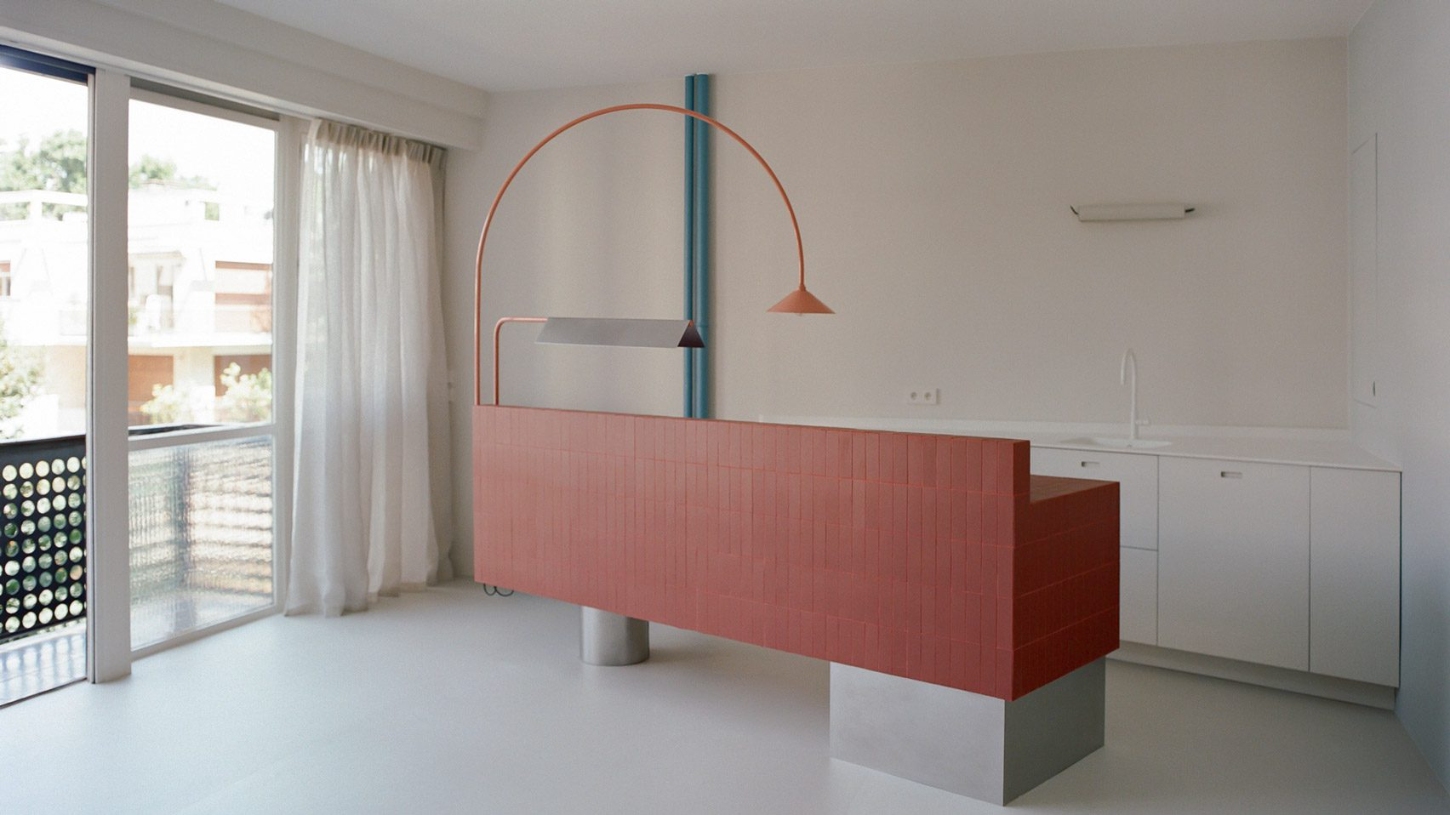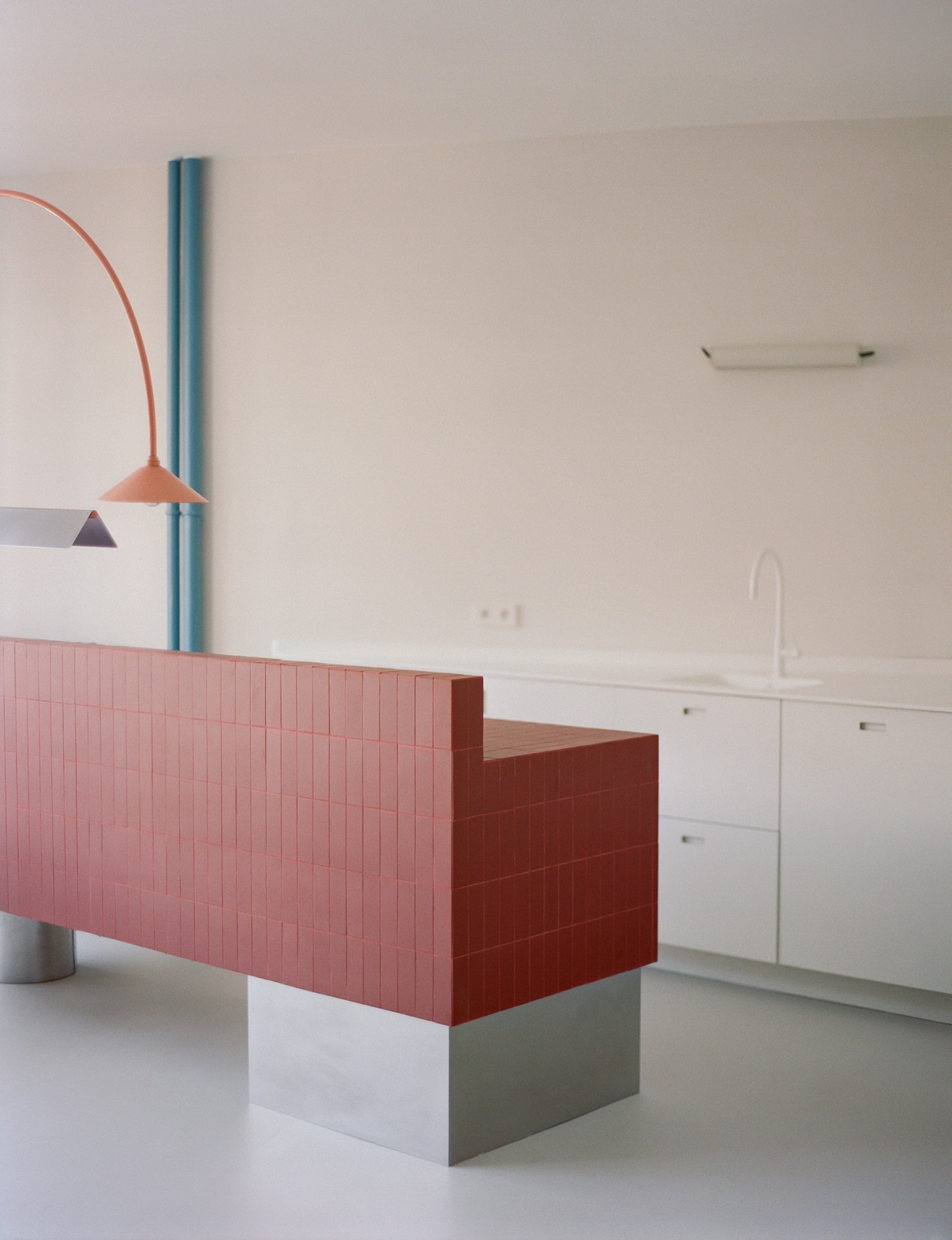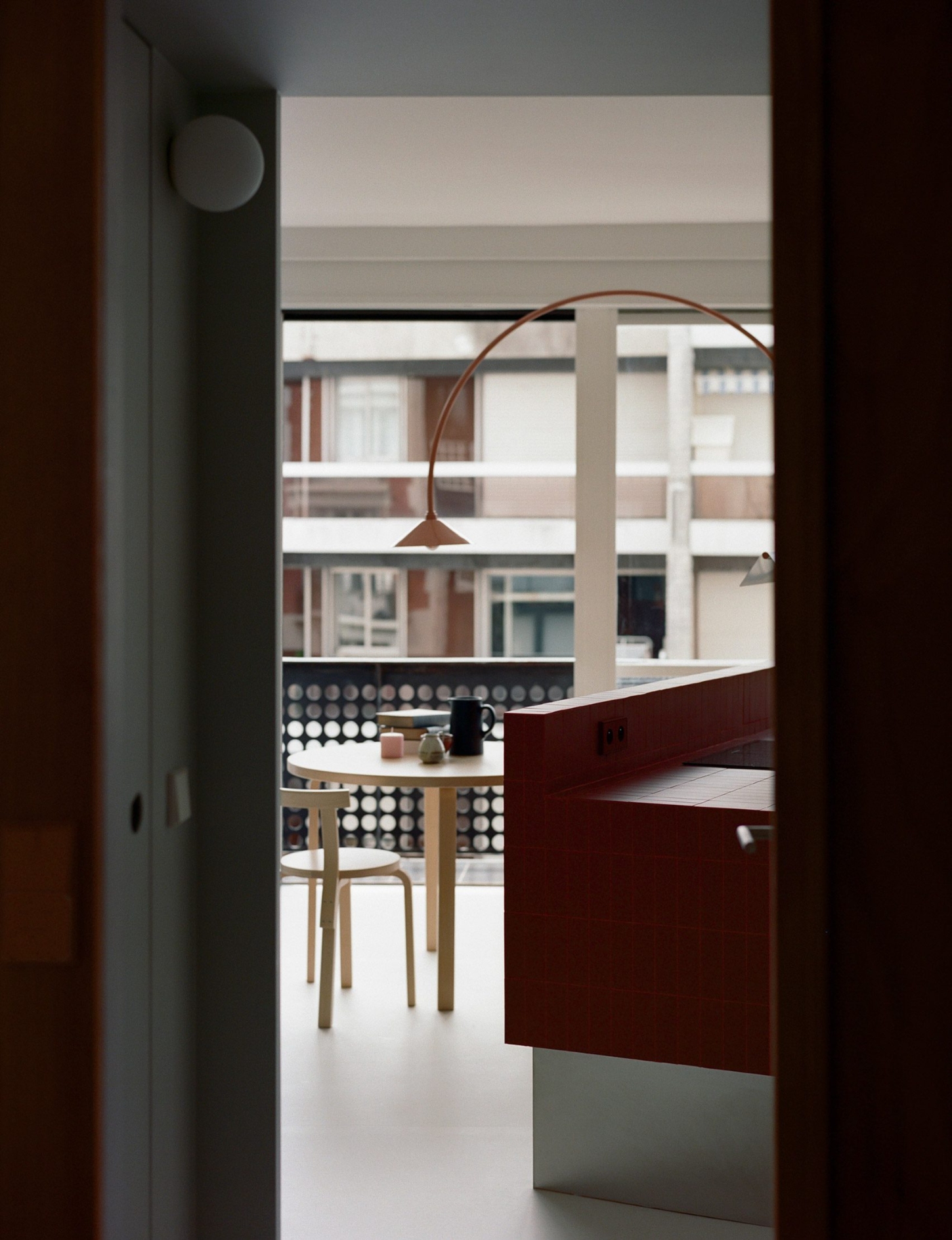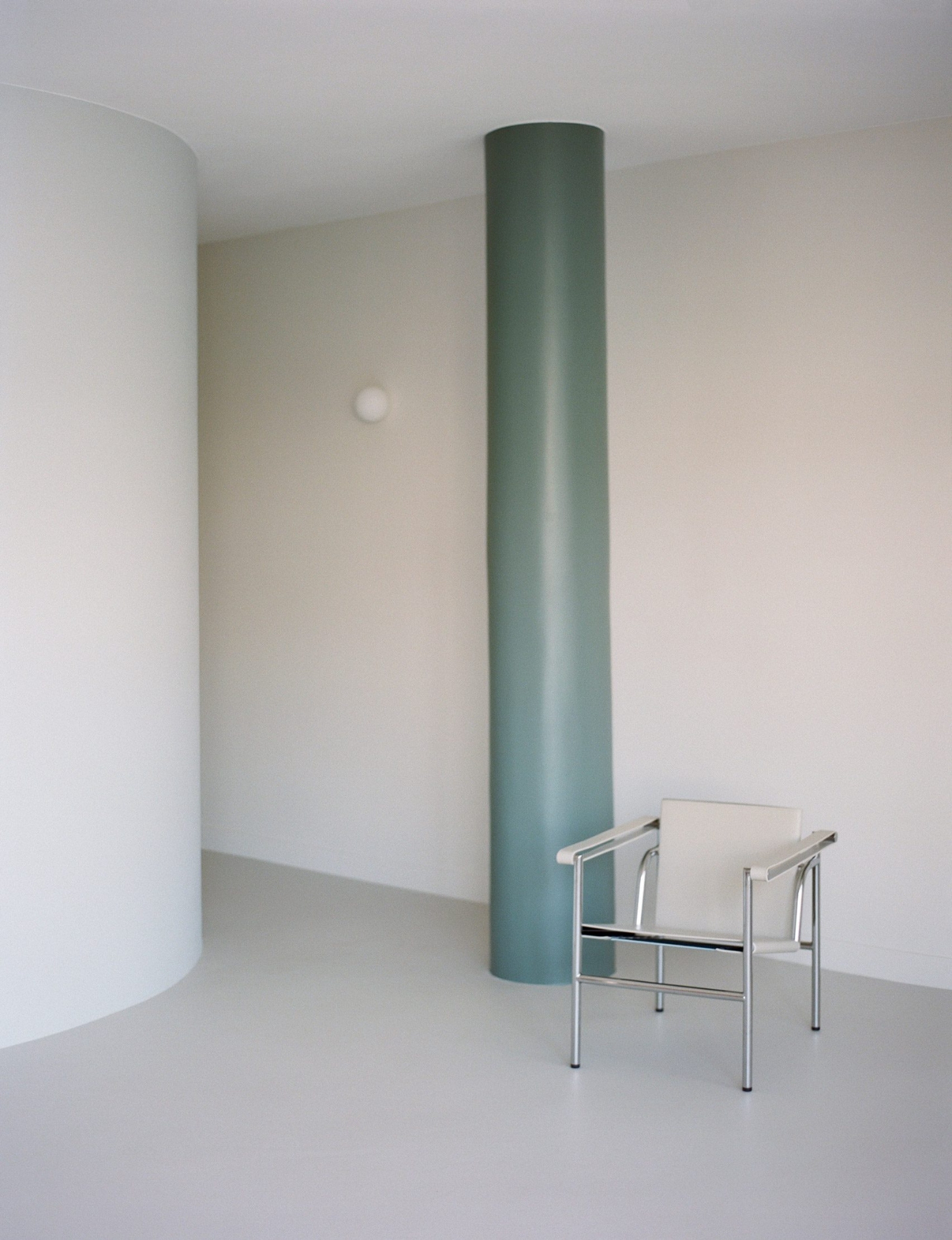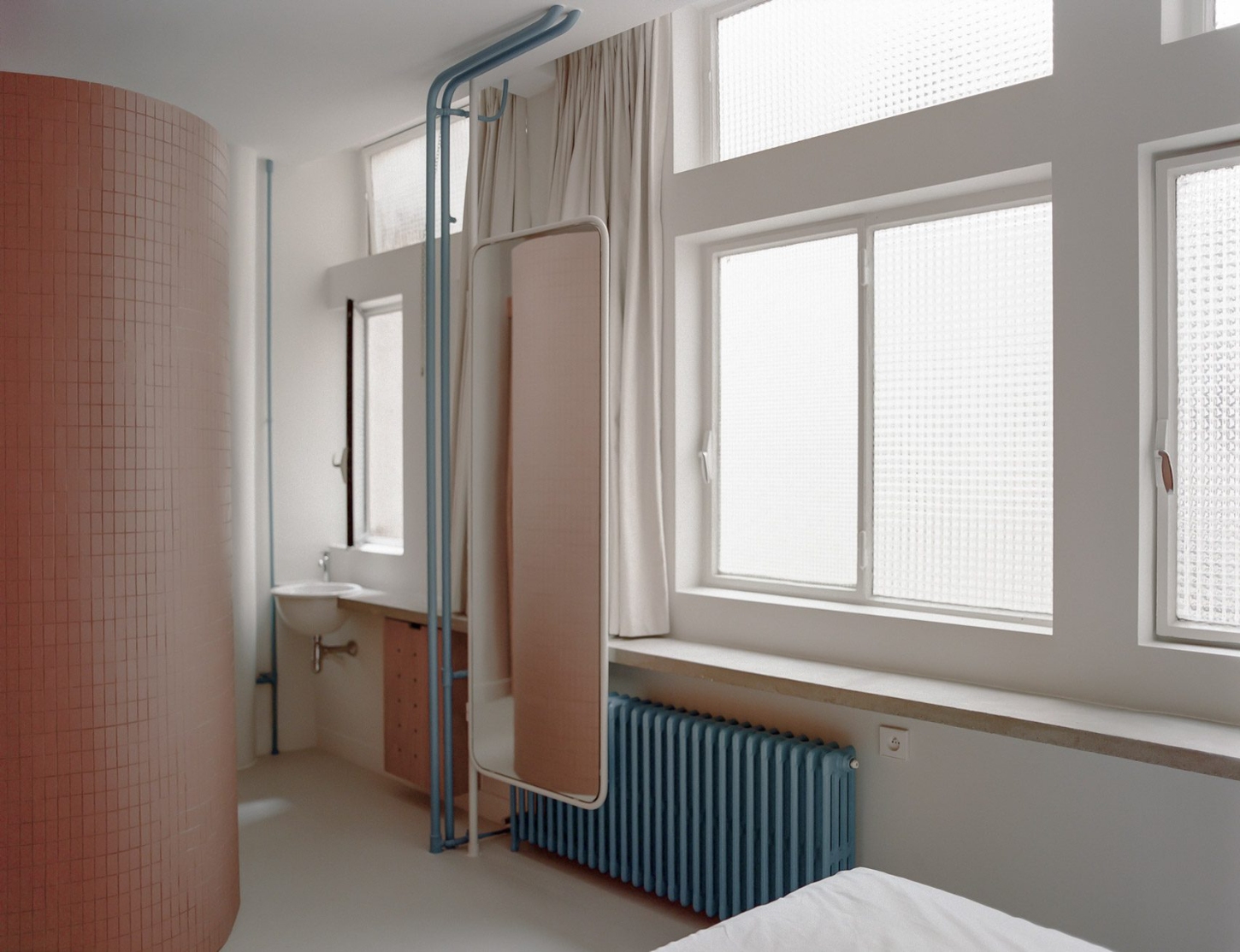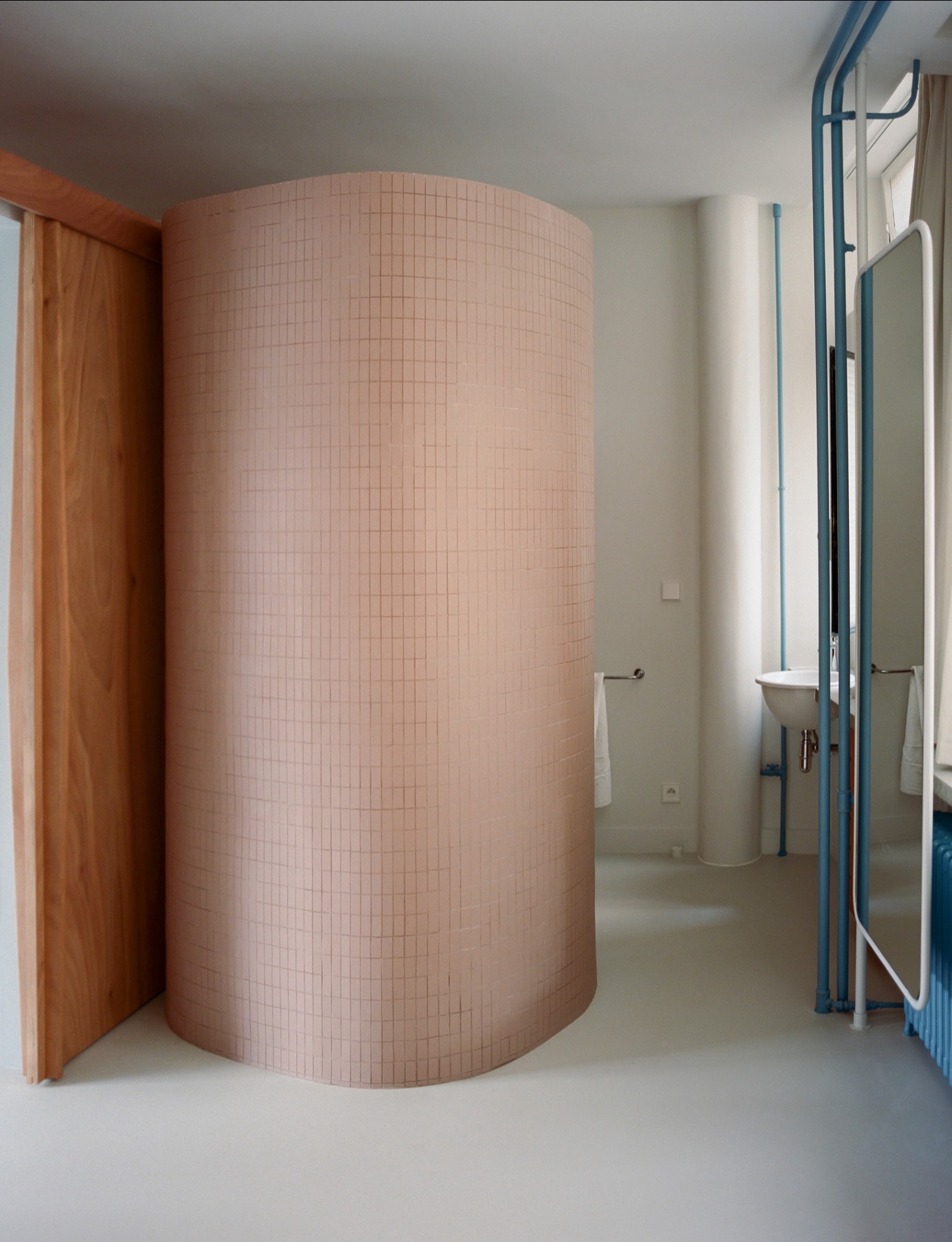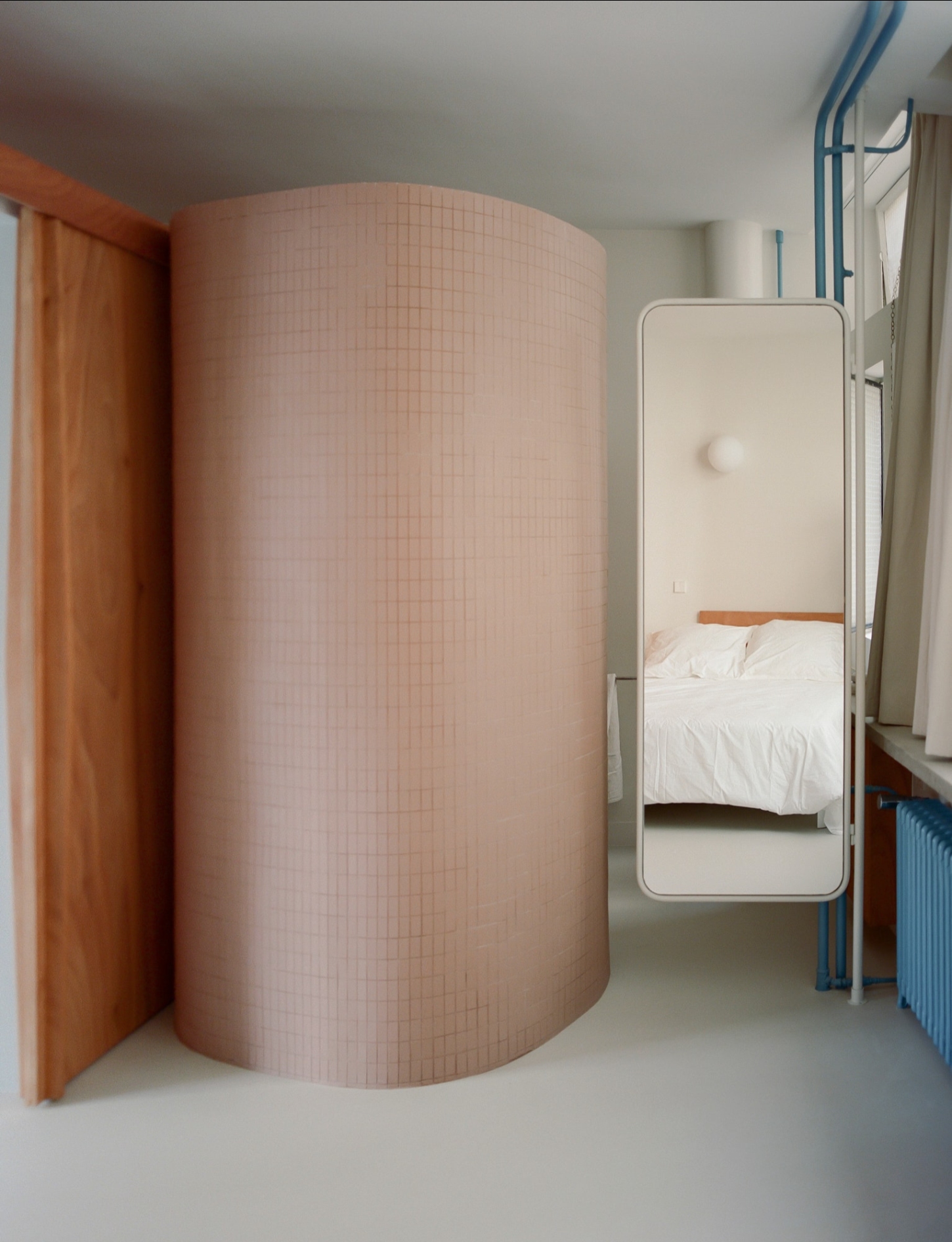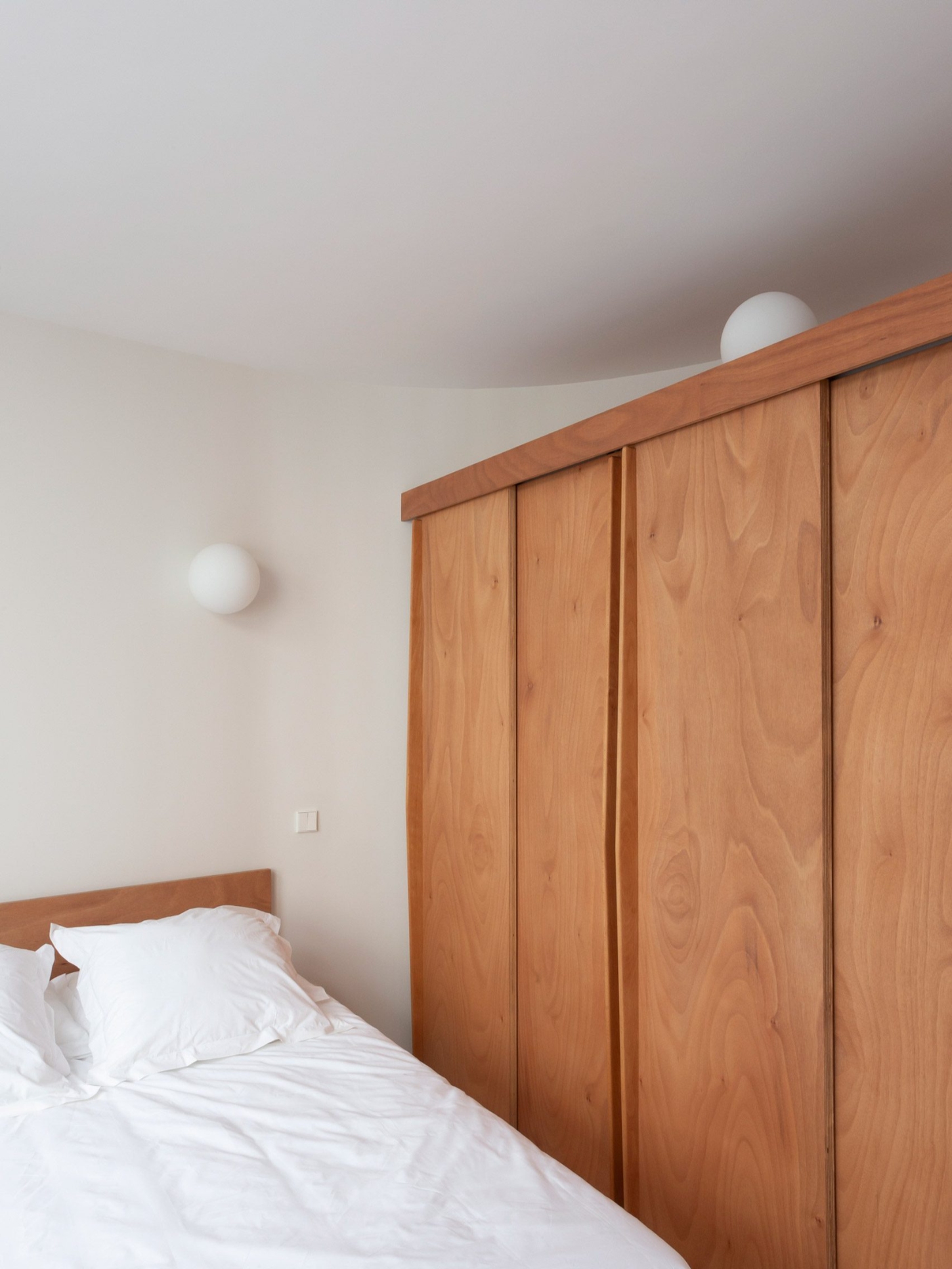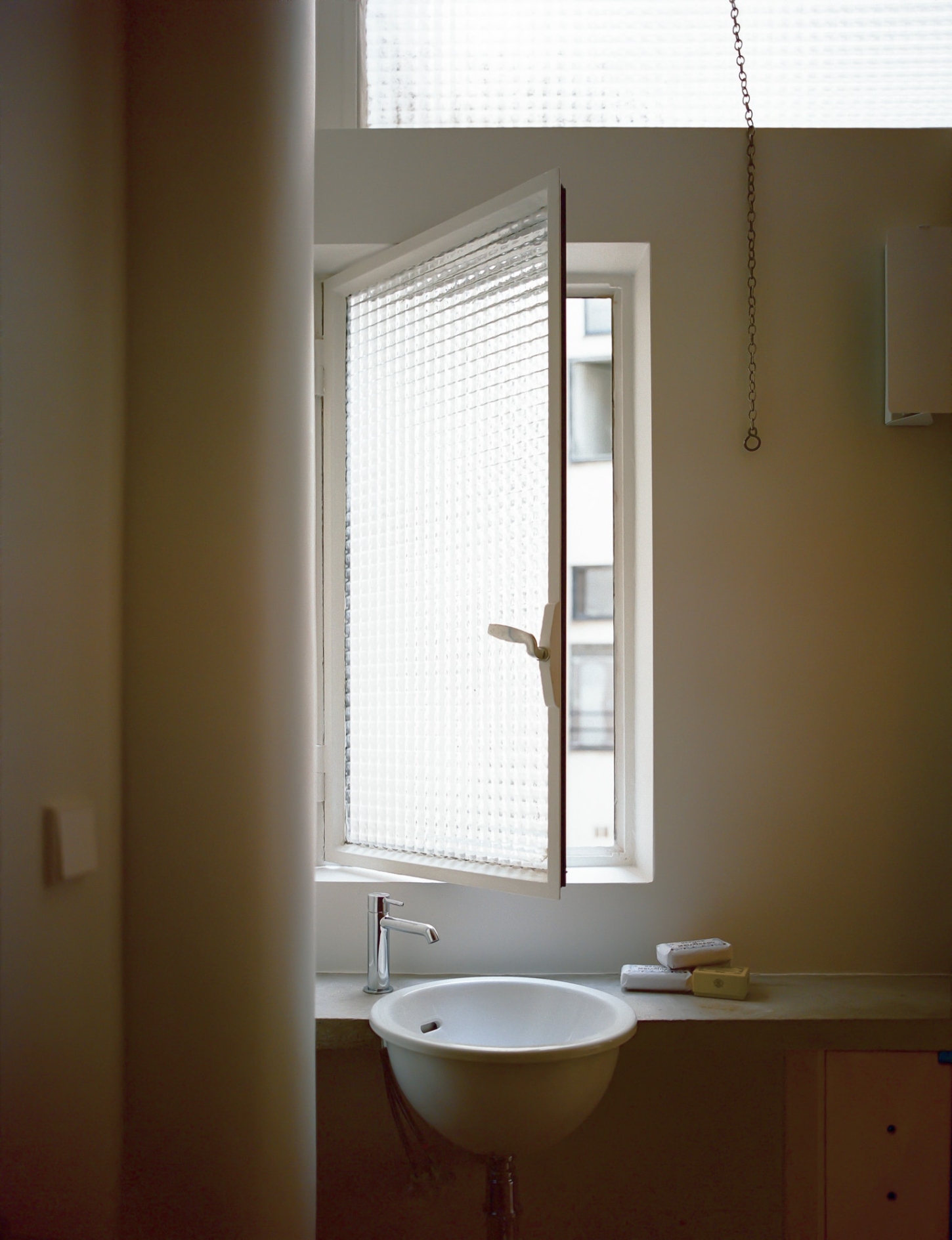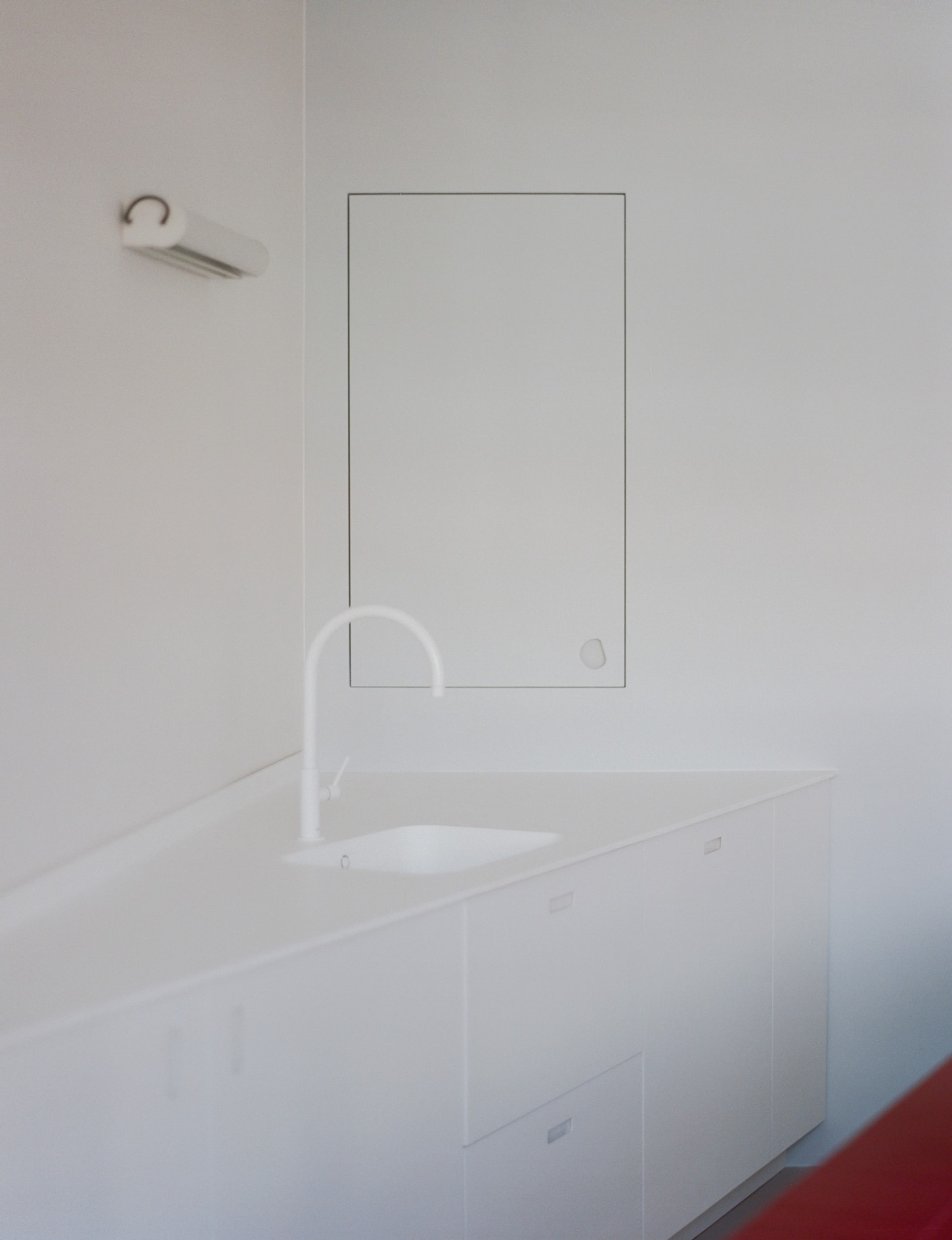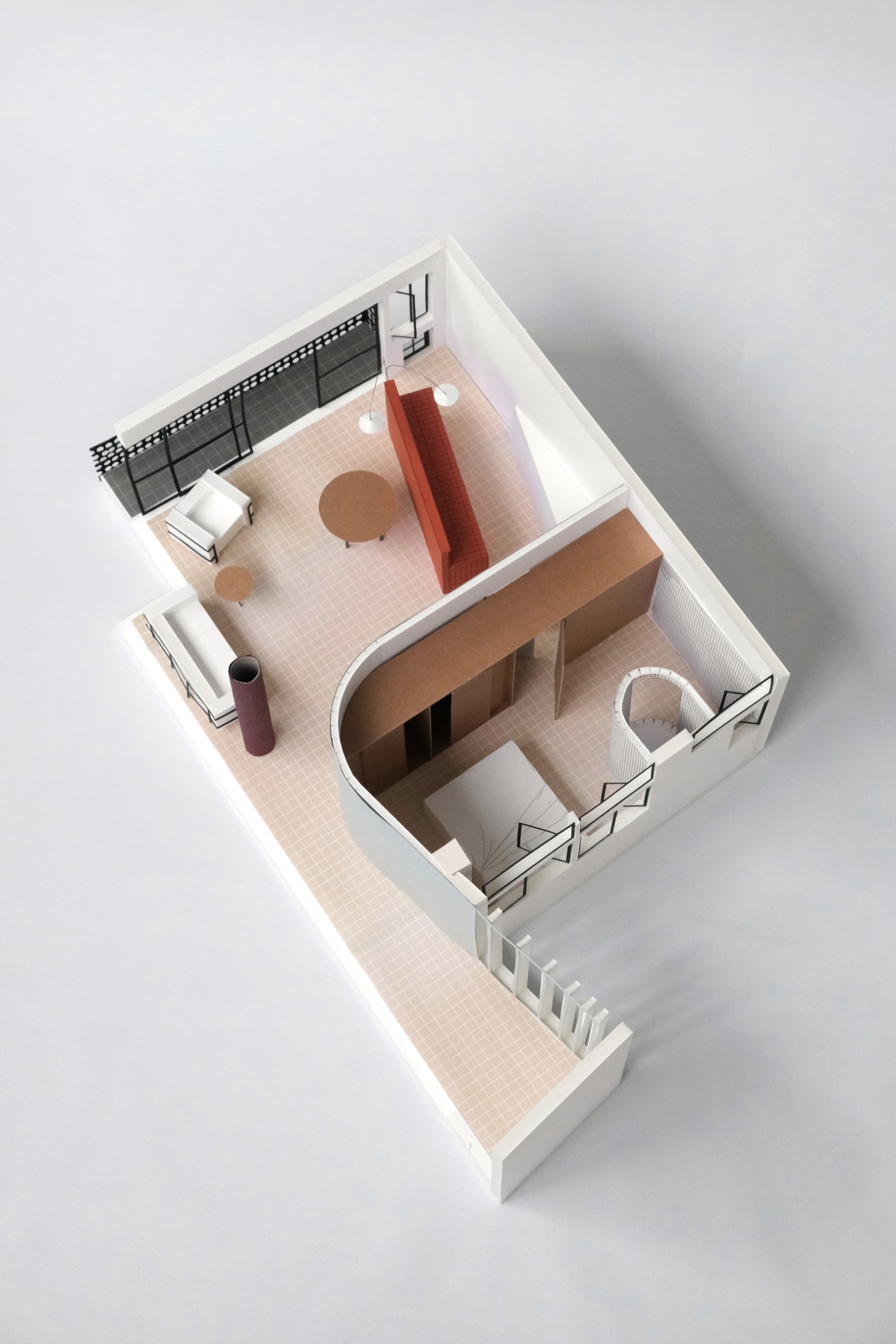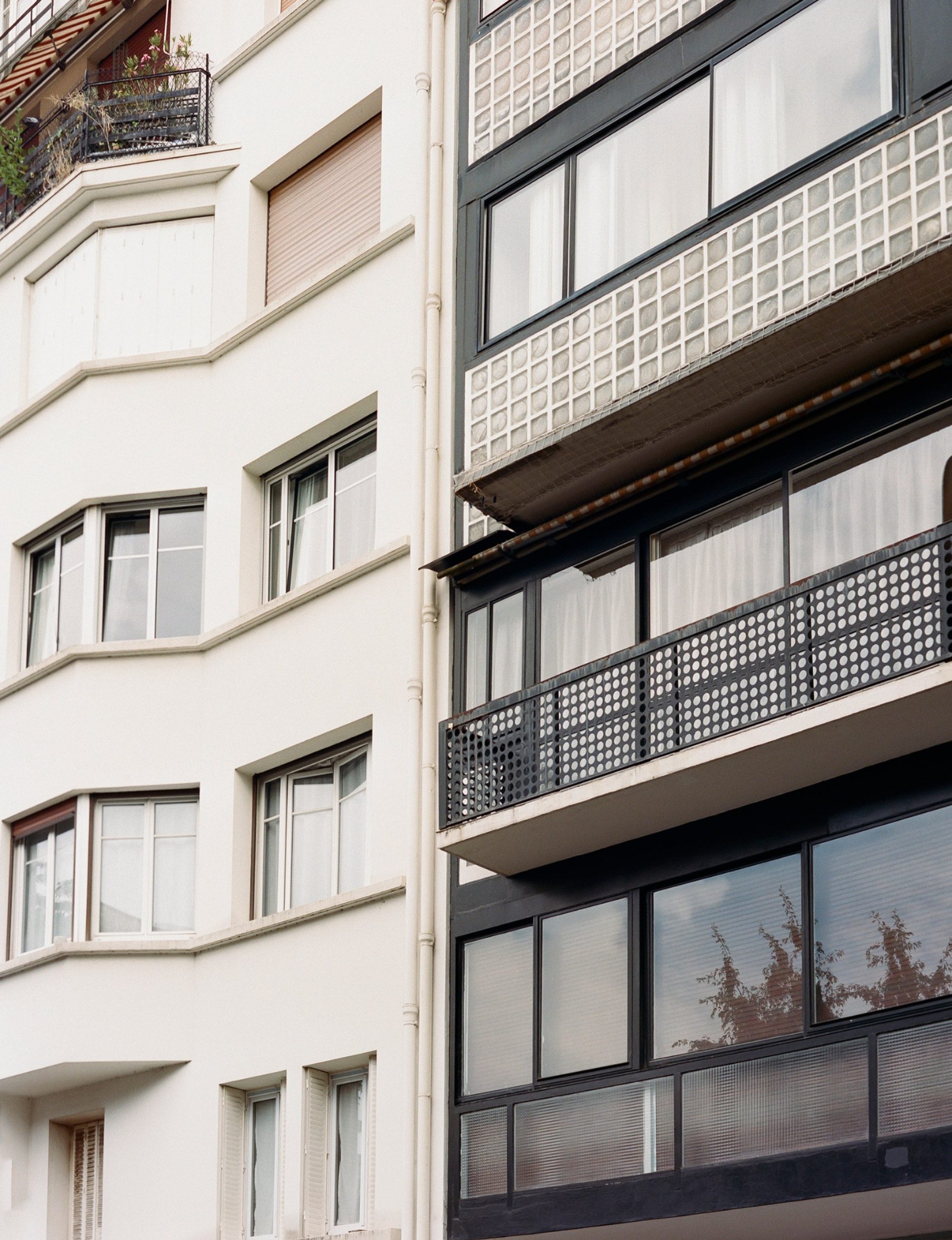On the third floor of Immeuble Molitor in Paris, an apartment has just been reimagined by architecture studio RREEL, who were asked by new owners to return something of the Corbusian spirit—without lapsing into nostalgia.
The building itself is modernist legend: designed in 1931 by Le Corbusier and Pierre Jeanneret, and lived in by Le Corbusier until his death in 1965. But this unit had drifted far from his vision. By the 1970s, partitions divided the once-open plan, thick brown carpet dulled the floors, and a wash of orange rendered the space nearly unrecognisable.
RREEL approached the commission not as restoration, but as dialogue. “The plan is entirely contemporary and not a reproduction of the original state,” says co-founder Rosalie Robert. “We had no intention of recreating a pastiche of the 1930s, but rather of taking advantage of the open plan offered by Le Corbusier to create something new.”
That process began with stripping everything back. Beneath later layers, the architects discovered fragments of a wallpaper Le Corbusier designed in the early 1930s for Salubra. Too fragile to save, it was painted over in a disciplined white—setting the stage for sharper, more deliberate gestures.
The kitchen, once tucked at the back, now anchors the main living space. A long counter clad in sienna-red tiles—drawn from Le Corbusier’s own 1931 Colour Keyboards—introduces warmth and weight. A curved wall, reinstated from the original plan, conceals the bedroom and bathroom. The shower continues the motif, wrapped in the same red tiles.
Elsewhere, the details work like quiet echoes. Structural columns, radiators and exposed pipework are painted a deep blue lifted from the lost wallpaper. A concrete ledge running beneath the windows, intact since the 1930s, has been reactivated as a base for a bathroom sink.
The result feels poised between eras. Corbusier’s Five Points remain legible—the free plan, the ribbon windows—but RREEL’s interventions assert themselves as present-tense design, not historical facsimile.
That seems fitting. Immeuble Molitor has been a UNESCO World Heritage site since 2016, and Le Corbusier’s own apartment above was carefully restored two years later, complete with furniture and paintwork. Apartment 24, by contrast, has been allowed to move forward.


